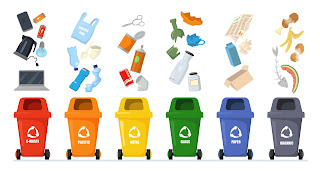Upcycling vs Recycling: Which is a Better Use of Resources?
Do you ever stop and think about how our daily lifestyle choices directly impact the environment around us? Whether it's shopping with reusable bags instead of disposables, turning off lights before leaving a room or making smarter decisions about where we get our clothes from - what if one small change could make even bigger impacts on sustainability? Enter upcycling vs recycling: two powerful methods for reducing waste and preserving resources.
In this blog post, let's explore the difference between upcycling and recycling and see which one stands out as the better use of resources.
To begin, let's define both terms - Upcycling and Recycling.
Recycling is the process of turning waste into a new product. This is done through a series of processes, including collection, sorting, and processing. While recycling is an excellent way to reduce waste, it does require a significant amount of energy. For example, recycling aluminum cans takes 95% less energy than producing new ones, but it still requires a hefty amount of energy. Additionally, not all products are recyclable, further reducing their effectiveness.
Upcycling, on the other hand, is the process of taking something old or discarded and turning it into something new and useful. The beauty of upcycling is that it’s a creative way to use existing resources and reduce waste. It also requires less energy than recycling, as it skips the processing stage. However, upcycling requires more skill and craftsmanship than recycling.
Know The Difference Between Upcycling and Recycling
One key difference between upcycling and recycling is the end product. Recycled products often lose some of their original properties, while upcycled products retain some of their original character. For example, a recycled plastic bottle may become a new plastic bottle, but an upcycled bottle could become a lampshade or vase.
Another difference is the impact it has on the environment. Although recycling reduces waste, it still requires a great deal of energy, which can be harmful to the environment. Upcycling, on the other hand, has a much lower carbon footprint, making it a more sustainable option. Additionally, upcycling often supports local businesses and communities, as it encourages people to buy local and support small businesses.
So, which is the better option? It depends on the materials and resources you have. Recycling is best for materials that can’t be used again, like plastic bottles and old electronics. Upcycling is best for materials that still have some life left, like clothing and furniture. Both options have their benefits, and they can be used together to create a sustainable future.
Conclusion:
So, after all this discussion, is upcycling a better option than recycling? It's tough to say since both options have their advantages and disadvantages. The choice between the two depends on several factors, including the materials being used, the environmental impact, and the brand image. However, the takeaway point is that upcycling and recycling are both sustainable practices and, therefore, should be encouraged over wasteful behavior. At the end of the day, some things cannot be upcycled, and recycling is necessary. The best approach is to mix and match both strategies to suit our needs and keep our planet from feeling the waste of our daily lives. If you are interested to know more details then visit online at SwagCycle and get all the information.



Comments
Post a Comment